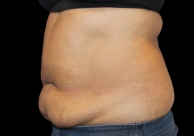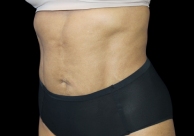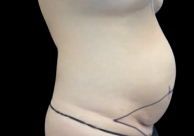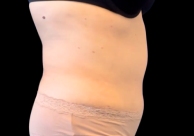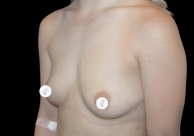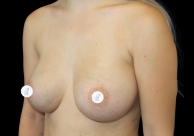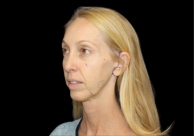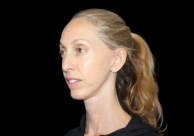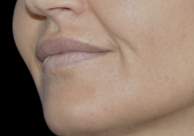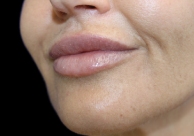Arm Lift
Conveniently located to serve the areas of Honolulu, HI

An arm lift (brachioplasty) is a procedure that removes excess skin from your arms to improve their appearance and help you achieve a smoother, more toned figure. If you are struggling with loose, sagging skin from aging or weight fluctuations, colloquially known as “bat wings,” we can reshape the upper arms to rebalance your proportions.
Dr. Daniel Murariu and Dr. Robert Peterson have helped many patients improve their arms for a more toned, sculpted look with an arm lift. Sun exposure, aging, and environmental factors all affect the quality of your skin. Droopy skin on the arms can affect patients of any age, and even if the skin is firm, some people simply have too much tissue in the upper arm–causing the thickness or circumference of the upper arm to be well out of proportion to the rest of the body. At Athena Clinic Plastic Surgery, we personalize each procedure for your unique needs to help you achieve your goals.
Contact our office or call (808) 944-8551 to learn more about how we can improve your arms for a slender, more athletic appearance.
Contents
About Arm Lifts
Environmental elements, sun exposure, and hormonal changes can affect the quality of your skin and result in droopy pockets of tissue (1) that affect your self-esteem. Although droopy skin can occur at any age, some individuals also notice that the skin along the upper arms becomes thicker as they age which can affect their appearance. With an arm lift, we can remove the excess tissue to sculpt your arms and create a more slender, natural-looking appearance. An arm lift can also make it easier to fit into clothing you enjoy–wearing short-sleeved shirts, shirts or singlets can feel uncomfortable with droopy skin. The procedure has helped many patients improve their quality of life by increasing their mobility as well.
Contact our office or call (808) 944-8551 to learn more about how an arm lift can restore your figure for a smoother, more athletic appearance.
Avulsion Brachioplasty
At Athena Clinic Plastic Surgery, Dr. Murariu uses a technique called avulsion brachioplasty. This surgical technique pulls the excess skin away from the arm and often utilizes liposuction, which differs from more traditional excisional methods. This allows for a more efficient procedure and reduced risk of complications. With an avulsion brachioplasty, Dr. Murariu can effectively preserve underlying structures such as lymphatics, blood vessels, and nerves. This method also reduces potential swelling. (2)
Arm Lift After Weight Loss
If your skin is stretched by previous weight gain, it may not be able to maintain a taut appearance after significant weight loss. In these cases, surgically removing the excess skin is the most effective option. For a significant amount of excess skin, we can extend the incision down from the inside of the arm to the elbow to remove it while still maintaining a natural-looking appearance. With a discreet scar, we can sculpt your arms for a more slender, well-contoured appearance. We can combine an arm lift with liposuction for a more comprehensive approach if you also have pockets of excess fat that you would like to address. (3)
Benefits
There are several benefits to an arm lift, including:
- Smoother, more athletic upper arms: Removing droopy pockets of skin can highlight your muscle definition as well as create a smoother more toned appearance.
- Improved body proportions: The circumference of the upper arm can affect your body proportions.
- Long-lasting results: If you maintain a stable weight and take good care of your body, you can maintain your results for several years.
- Increased confidence: You can enjoy feeling better about your appearance which can improve the way you feel about your body.
- More clothing options: Many patients find that they can increase their clothing options because they can fit into different types of clothing.
- Enhanced quality of life: Removing excess skin can improve your mobility which can make participating in exercise easier.
After an arm lift, you can enjoy an improved quality of life without excess skin that droops or swings uncomfortably when you move. Since the procedure permanently removes excess skin, we can help you achieve lasting results. The incision is discreet along the underside of the arm.
Candidates
Suitable candidates for an arm lift would like to improve the appearance of droopy arm skin to help them feel more comfortable in their bodies. Candidates would also like to:
- Remove excess droopy skin with
- Are aware that a longer scar will be present along the underside of the arm
- Achieve natural-looking results
- Enjoy long-lasting results
Candidates will need to take good care of their bodies and must have realistic expectations about the look that they can achieve with the procedure. You will also need to be able to maintain a stable weight, because weight fluctuations can affect your results. We can discuss the best treatment plan for you as well as provide resources during your consultation.
Medical conditions such as high blood pressure, thyroid conditions, diabetes, or bleeding problems could affect your candidacy for the procedure.
Personal Consultation

During the initial consultation, we will ask you to describe your body goals and discuss what you would like to accomplish with the procedure. The meeting will help us understand your expectations and determine whether or not an arm lift can help you accomplish your goals. We will also ask you about your medical history, including previous operations, medical conditions, and current medications.
We will also perform a physical evaluation of your arms to assess your skin tone and the degree of laxity in the treatment area. Your surgeon also will evaluate the amount of excess fat in your arm and can recommend liposuction if you need it. We will also take preoperative photographs during your initial consultation to help us monitor your progress. Your surgeon will discuss with you the details of the operation and the possible risks and complications associated with the procedure.
If you have other areas with lax skin, we can recommend additional body contouring treatments to help you achieve your goals. To learn more about the additional procedures we offer, see our blog.
Preparation
There are several steps you will need to take to prepare and make your experience as easy as possible over the next few weeks:
- If you smoke, we will ask you to stop approximately 3 weeks before the procedure.
- You must stop taking medications and supplements that thin your blood approximately 2 weeks before surgery.
- We recommend that you run errands ahead of time and prepare your home for a comfortable recovery.
We usually perform arm lifts in our on-site surgical suite under IV sedation. You will need to make arrangements to take time off of work as well to focus on your recovery for the best results.
Procedure
On the day of your procedure, you must arrive at the office with clean skin. We will cleanse your skin, administer anesthesia, and mark your skin for surgery. Your surgeon will make discreet incisions along the natural folds of your skin where they are easy to conceal. Although we often make incisions along the underside of the arm or inside the armpit crease, the location of the incisions will depend on your unique anatomy. Depending on the amount of excess skin, we can make an incision along the armpit crease or extend it a short distance down the arm. Incisions can extend as far as the elbow for patients who have severely droopy skin.
If we perform liposuction during the procedure to remove pockets of excess fat, your surgeon will use a thin cannula to remove the fat with gentle suction. The procedure typically takes 1.5-3 hours, depending on the condition of your skin and the amount of excess tissue that you would like to remove.
Recovery
After the procedure, our team will take you into our recovery area where we will monitor you closely. We will place a firm arm bandage or a compression garment over the treatment area for you to wear for the next 3-6 weeks. The compression bandage will help your body heal for the best results. Your recovery time will depend on your specific procedure and the condition of your skin. The incisions will initially be red or pink in color, and you may notice some temporary swelling afterward. You may be able to return to light work after 1-3 weeks, depending on your progress. In many instances, you can resume most of your normal activities, including some form of mild exercise, after several weeks.
Results
Although you will notice a difference immediately, you should expect to wait several weeks to enjoy the full effect. Incisions will typically fade into the natural tone of your skin after a few months. You can maintain your results for several years if you maintain a stable weight. If you experience changes to the appearance of your arms from aging, you can choose to undergo a second touch-up procedure to restore your appearance.
The Cost of an Arm Lift in Honolulu
The cost of an arm lift will depend on the condition of your arms, the amount of excess skin that you would like to remove, and whether or not you have additional aesthetic goals. We personalize each procedure for your specific needs and preferences.
Contact our office or call (808) 944-8551 to learn more about how an arm lift can balance your proportions and enhance your appearance.
Download this information on arm lift as a PDF.
FAQ
Can I combine an arm lift with other procedures?
Yes, you can combine an arm lift with other procedures, and we can discuss your body goals during your consultation to create a personalized plan for your needs.
Will I have scarring after an arm lift?
We take care to make discreet, well-hidden incisions along the underside of your arms. The incisions are easy to conceal beneath your clothing.
Can I exercise after an arm lift?
We recommend that you refrain from strenuous exercise for the first 1-2 weeks, and we can provide specific instructions for your recovery.
Are there any side effects or risks to an arm lift?
This will depend on your medical history, and we can discuss the best treatment plan for your needs during your consultation.
References
- Chaudhary M, Khan A, Gupta M. Skin Ageing: Pathophysiology and Current Market Treatment Approaches. Current Alzheimer Research. 2019;16(1). doi:https://doi.org/10.2174/1567205016666190809161115
- Knotts CD, Kortesis BG, Hunstad JP. Avulsion Brachioplasty. Plastic and Reconstructive Surgery. 2014;133(2):283-288. doi:https://doi.org/10.1097/01.prs.0000437261.31693.3c
- Egrari S. Brachioplasty: A Personal Approach. Aesthetic Surgery Journal. 2016;36(2):193-203. doi:https://doi.org/10.1093/asj/sjv146
